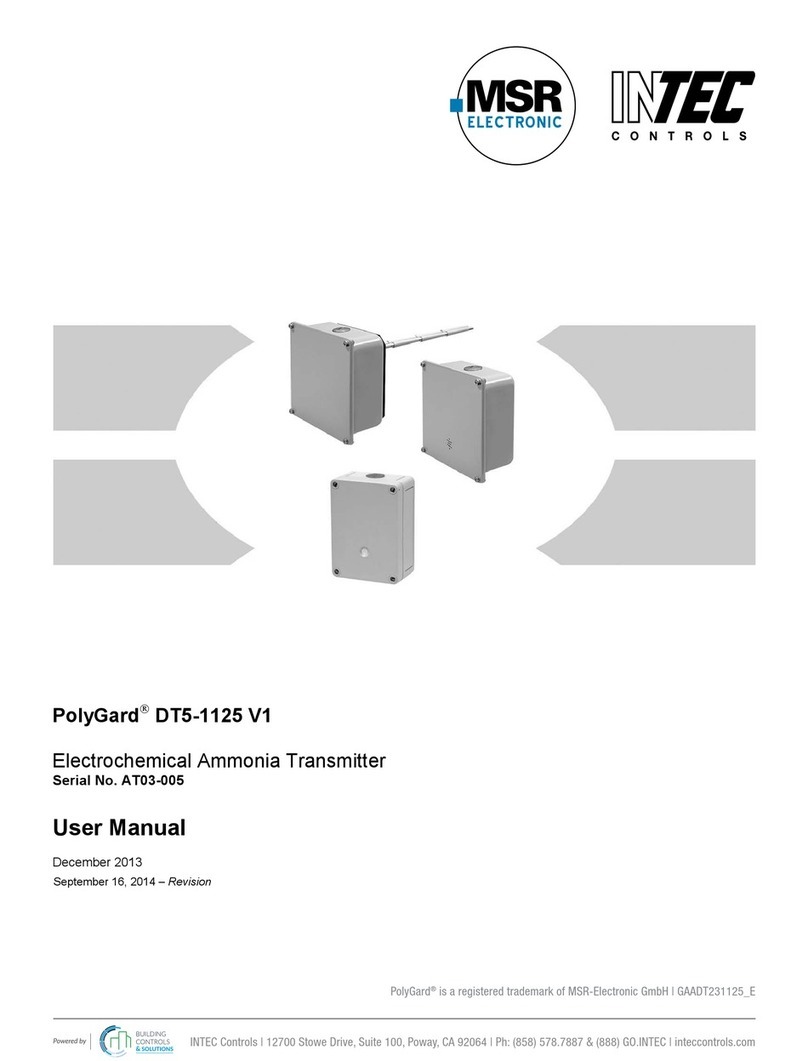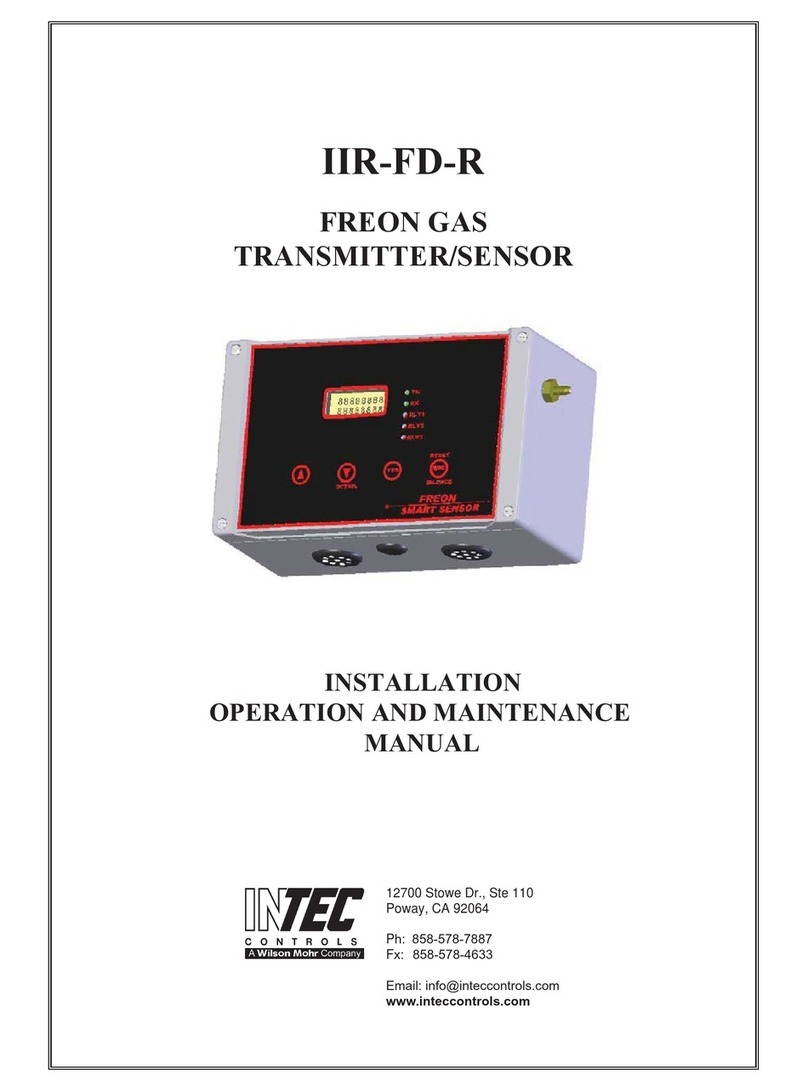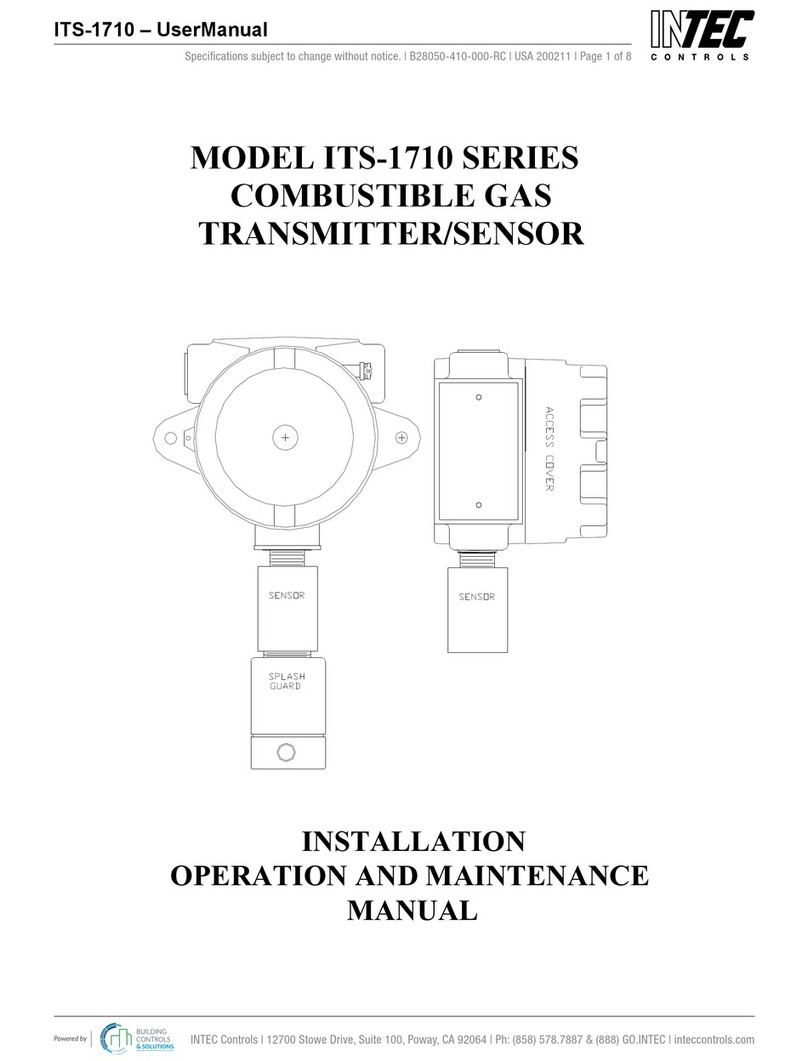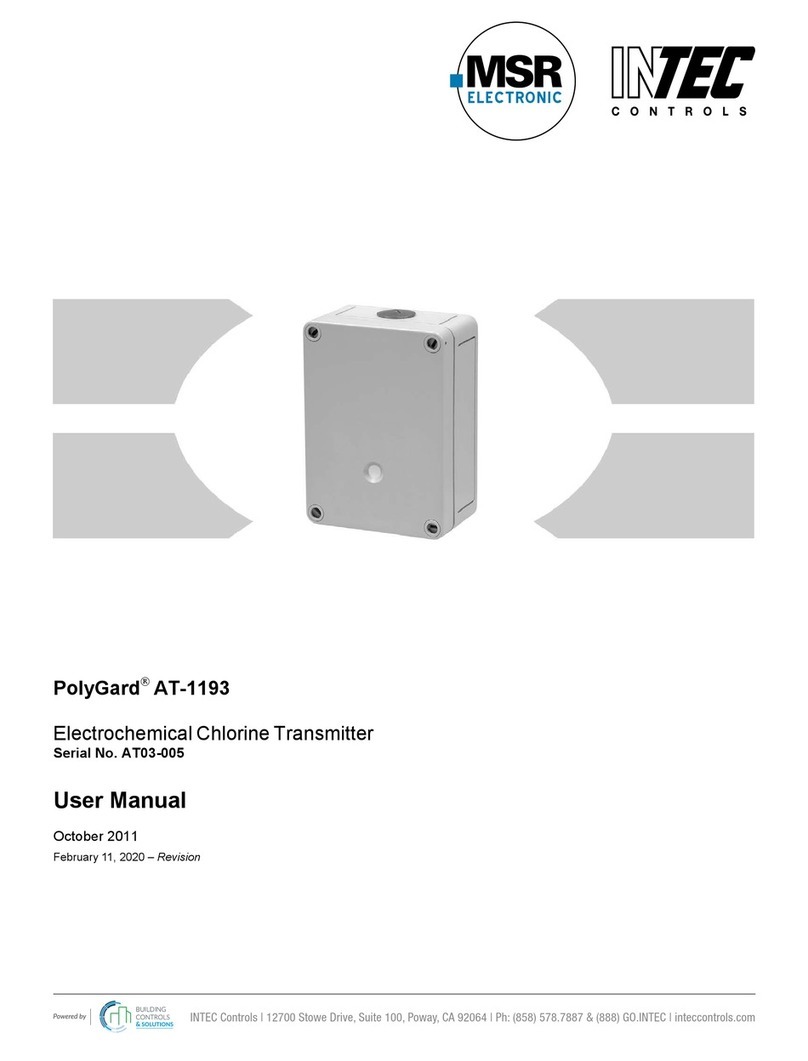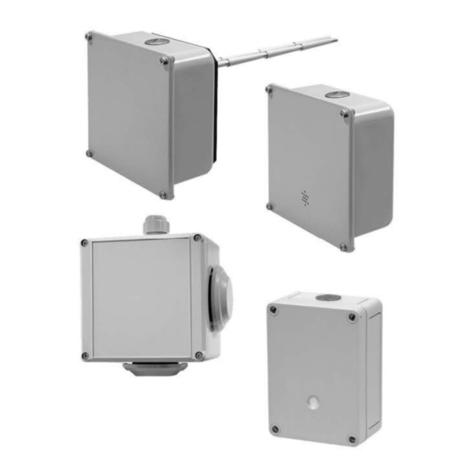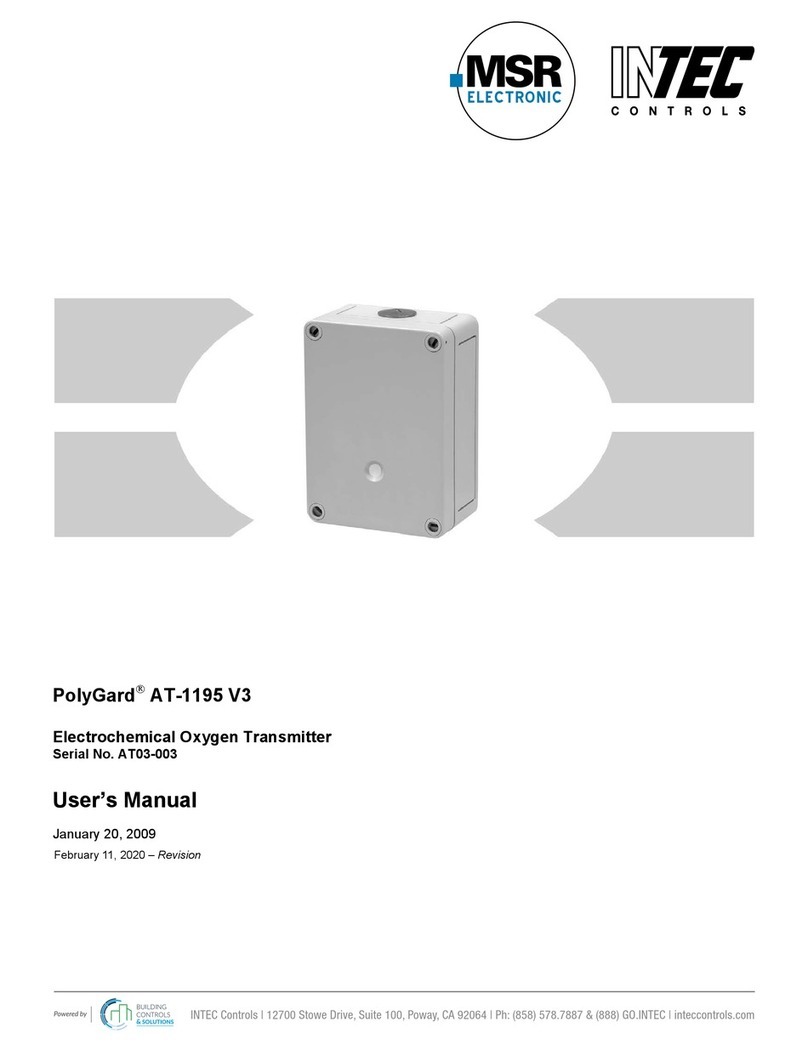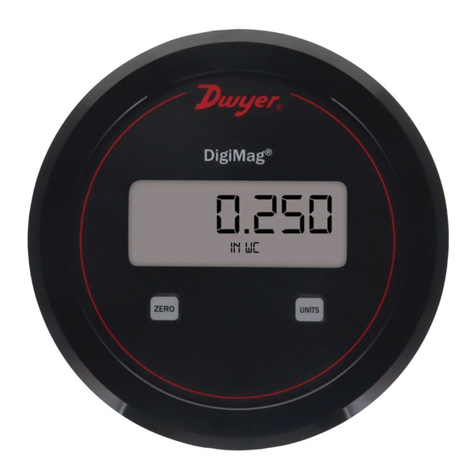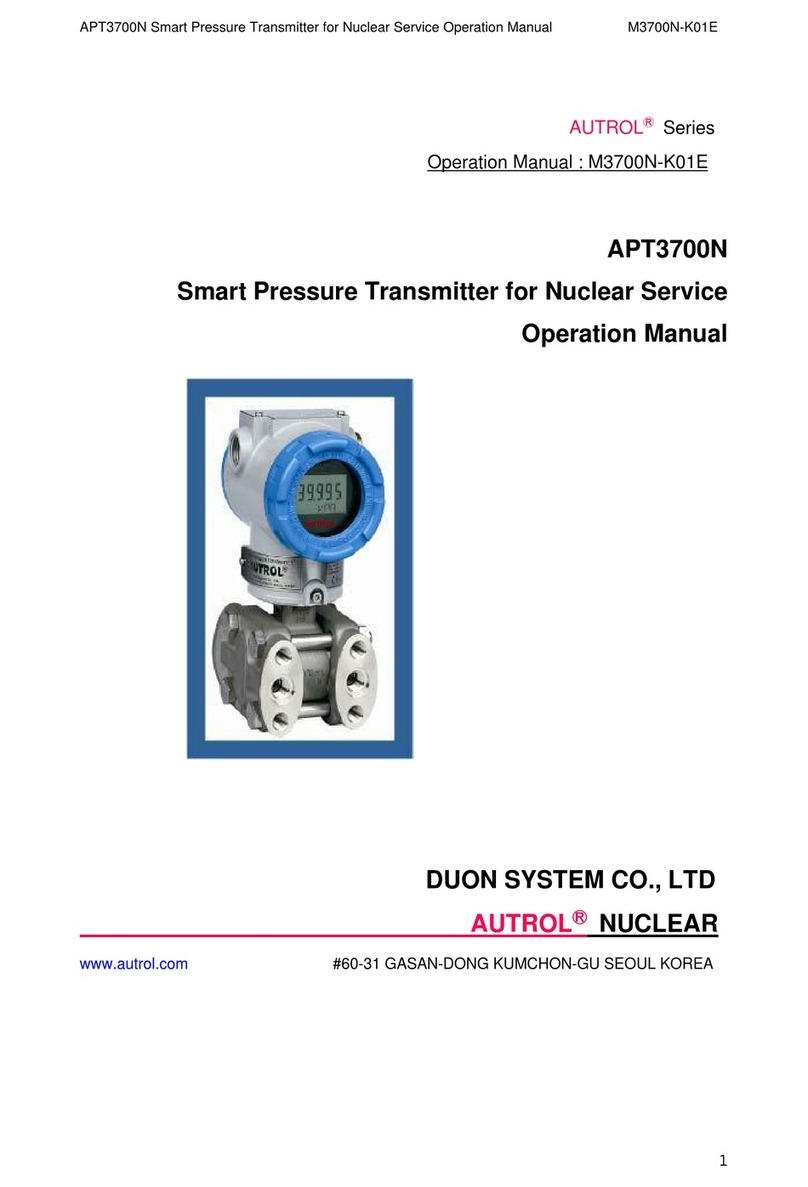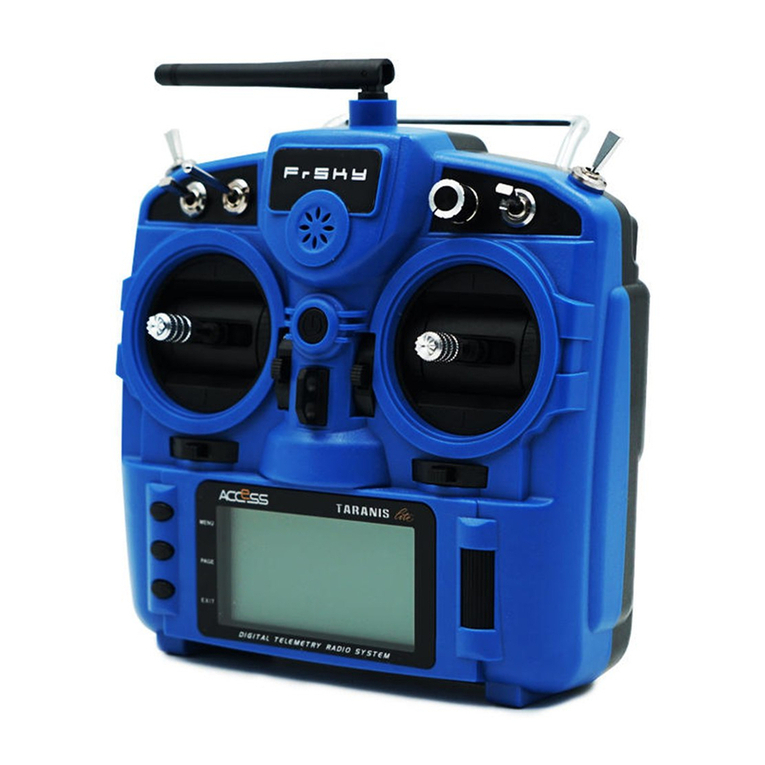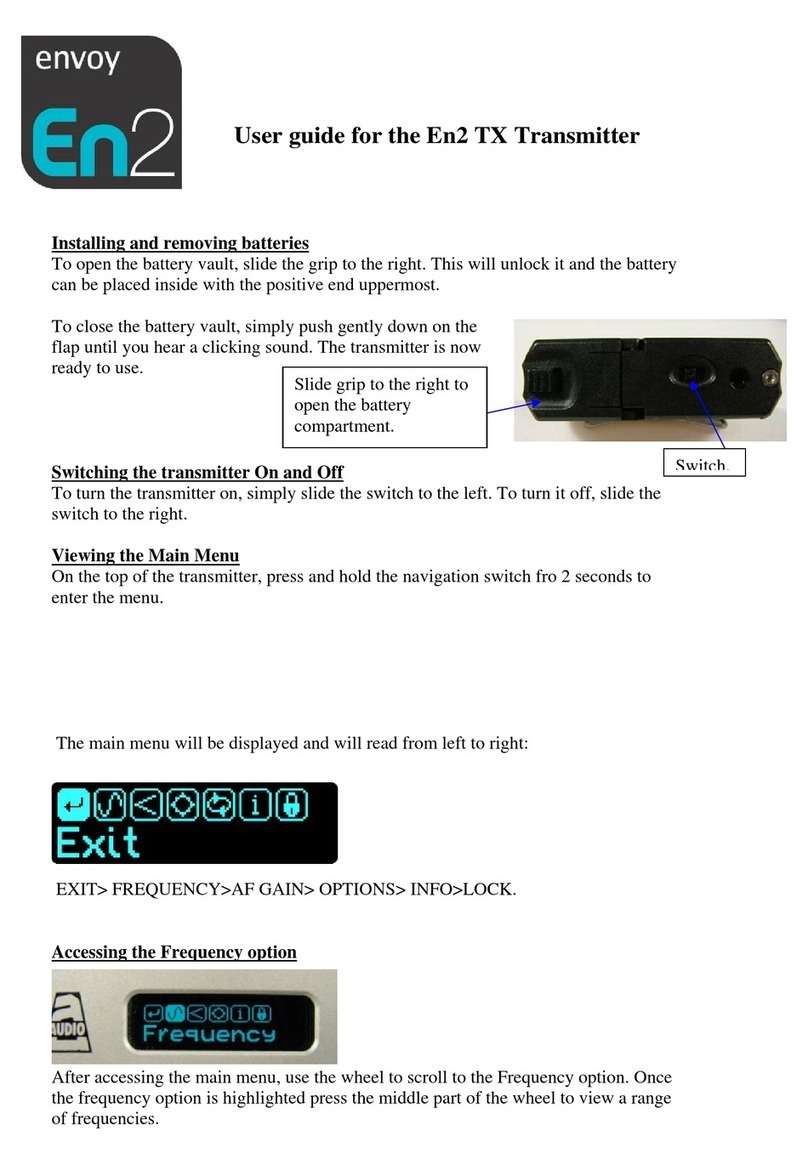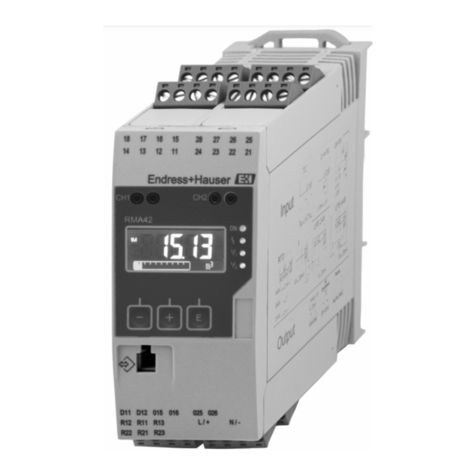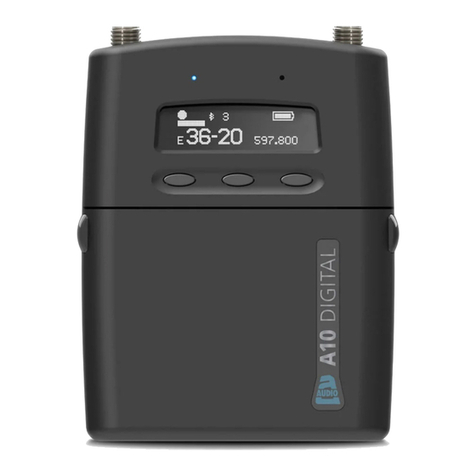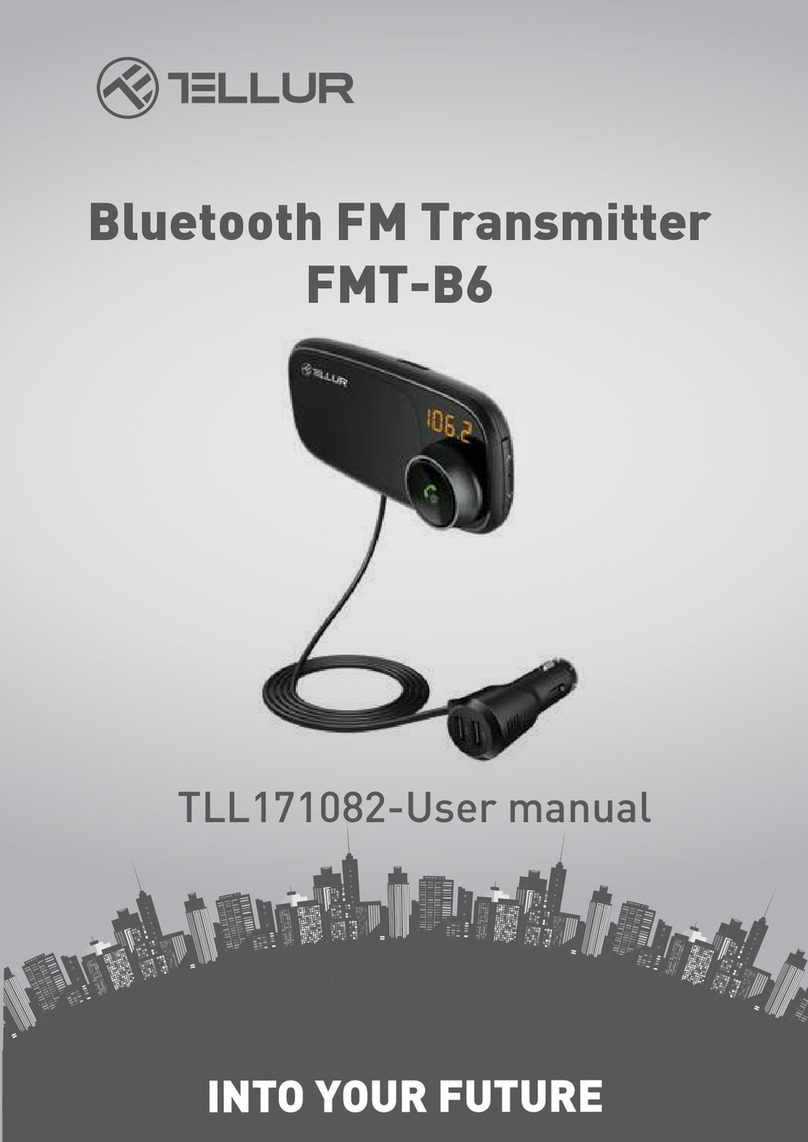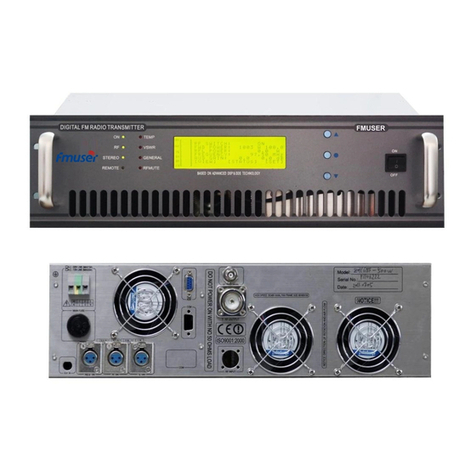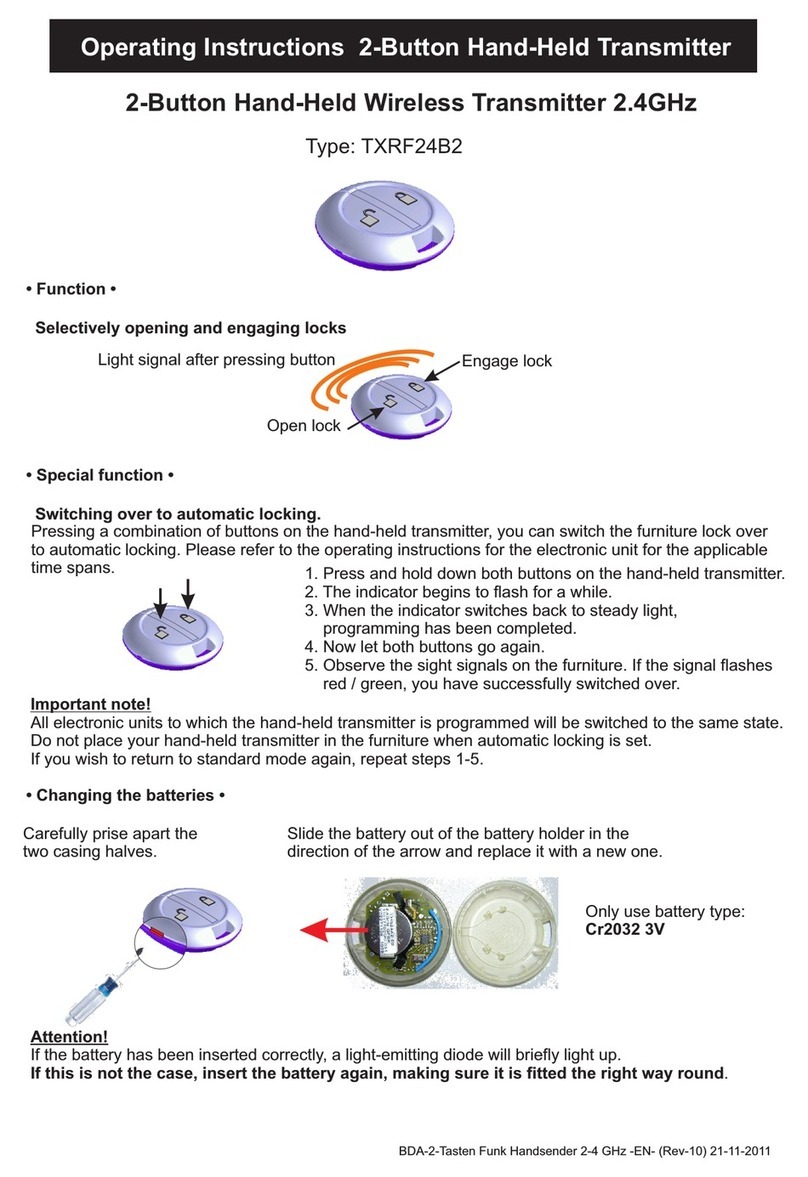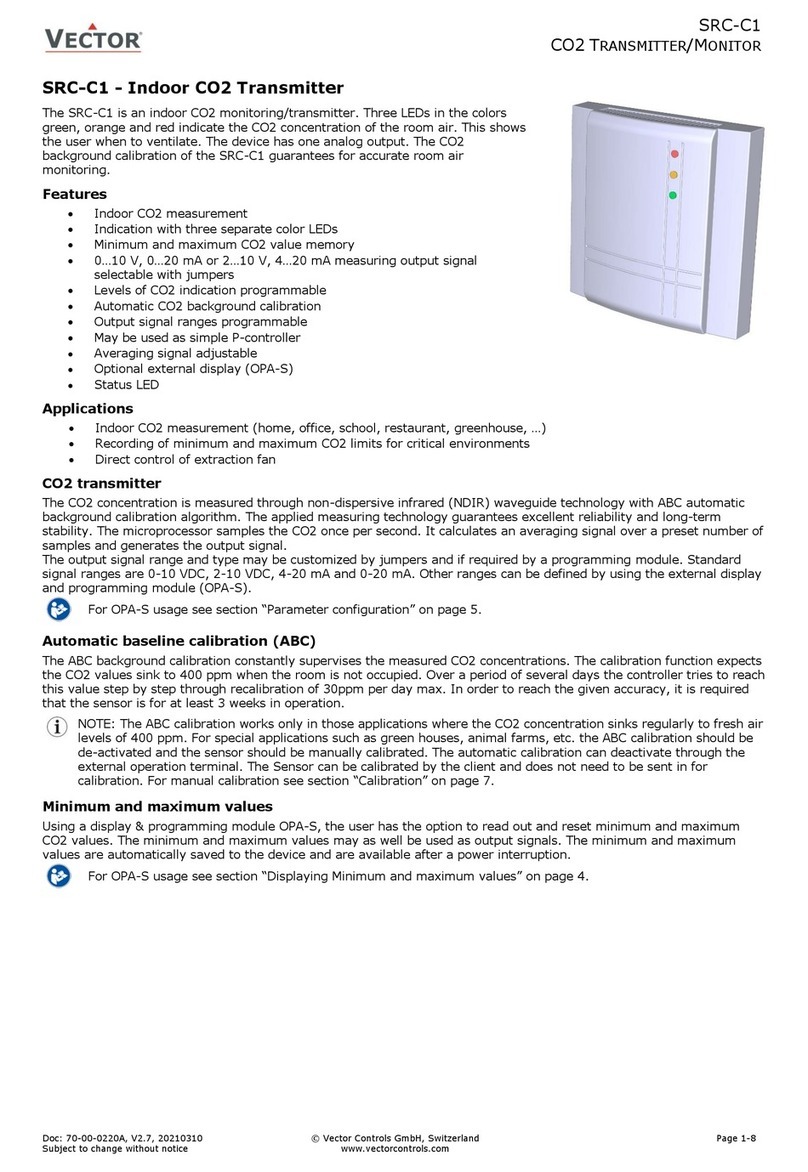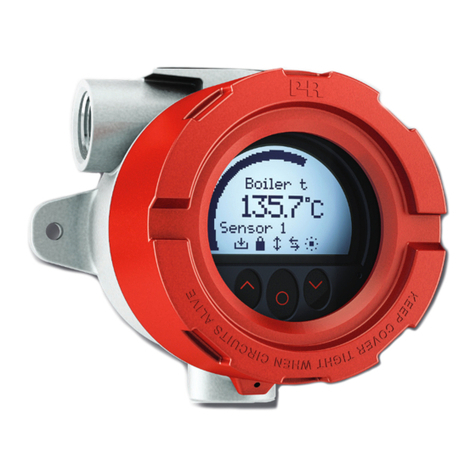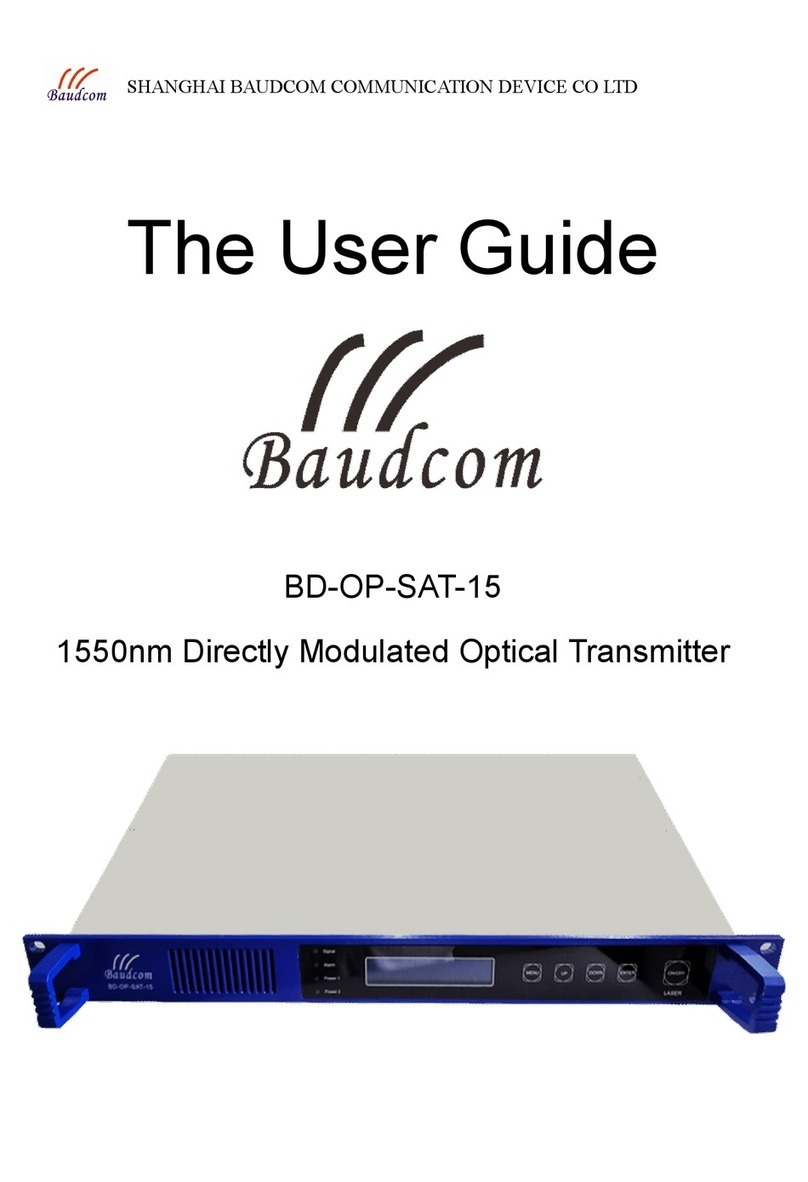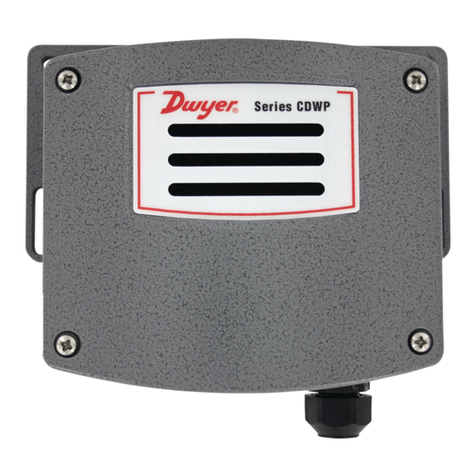
Printed in USA 150313
Page 14
10 Notes and General Information
It is important to read this user manual thoroughly and clearly in order to understand the information
and instructions. The PolyGard® transmitter must be used within product specication capabilities. The
appropriate operating and maintenance instructions and recommendations must be followed. Due to on-
going product development, INTEC and MSR reserves the right to change specications without notice.
The information contained herein is based upon data considered accurate. However, no guarantee is
expressed or implied regarding the accuracy of this data.
10.1 Intended Product Application
The PolyGard®transmitter is designed and manufactured for control applications and air quality compliance
in commercial buildings and manufacturing plants (i.e. detection and automatic exhaust fan control for
automotive maintenance facilities, enclosed parking garages, engine repair shops, warehouses with
forklifts, re stations, tunnels, etc.).
10.2 Installers’ Responsibilities
It is the installer’s responsibility to ensure that all PolyGard®transmitter is installed in compliance with all
national and local codes and OSHA requirements. Installation should be implemented only by technicians
familiar with proper installation techniques and with codes, standards and proper safety procedures for
control installations and the latest edition of the National Electrical Code (ANSI/NFPA70). It is also essential
to follow strictly all instructions as provided in the user manual.
10.3 Maintenance
It is recommended to check the PolyGard®transmitter regularly. Due to regular maintenance, any
performance deviations may easily be corrected. Re-calibration and part replacement in the eld may be
implemented by a qualied technician and with the appropriate tools. Alternatively, the easily removable
plug-in transmitter card with the sensor may be returned for service to INTEC Controls.
10.4 Limited Warranty
MSR-Electronic-GmbH and INTEC Controls warrants the PolyGard®transmitter for a period of two
years, 12 months normal exposure for the sensor, from the date of shipment against defects in material
or workmanship. Should any evidence of defects in material or workmanship occur during the warranty
period, INTEC Controls will repair or replace the product at their own discretion, without charge.
This warranty does not apply to units that have been altered, had attempted repair, or been subject to
abuse, accidental or otherwise. The warranty also does not apply to units in which the sensor element
has been overexposed or gas poisoned. The above warranty is in lieu of all other express warranties,
obligations or liabilities.
This warranty applies only to the PolyGard®transmitter. INTEC Controls or MSR shall not be liable for
any incidental or consequential damages arising out of or related to the use of the PolyGard®transmitter.
If the PolyGard® transmitter needs to be returned to INTEC Controls for service, an RMA number must be
obtained prior to sending.
Specifications subject to change without notice. | USA 151203 | Page 14 of 14
12700 Stowe Drive, Suite 100, Poway, CA 92064 | Ph: (858) 578.7887 & (888) GO.INTEC | relevantsolutions.com/inteccontrols
AT-3300_V3 – UserManual
Polygard® is a registered trademark of MSR | AT-3300_V3_UserManual














